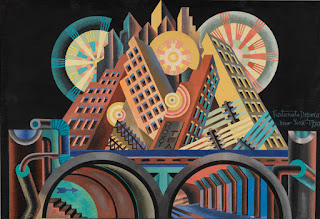Antigona Flamenca is back for another run through January 28, 2017 in New York. It turns out to be a timely engagement.
"Antigona Flamenca"
"Antigona Flamenca"
Soledad Barrio and Noche Flamenca
 |
| Soledad Barrio as Antigona Photo by Zarmik Moqtaderi |
Whether to go
along with the tyrant in power, or risk your life defying his whims, is the
argument between two sisters – and the first high point
of this fiery flamenco version of Sophocles’ Antigone.
Antigone – or Antigona, in Spanish -- cannot bear to see the body of her brother Polyneices left to rot on the battlefield, where he and his brother Eteocles slew each other battling for power in
The two sisters confront each other with electric foot-stamping and acrobatic turns -- the power of Ismene’s conventional thinking against the lonely righteousness of Antigone. And of course it is Ismene who survives, who slides back into the chorus, observing the woes that befall others.
Few dancers can match the intensity of Soledad Barrio’s flamenco, but Marina Elana as Ismene takes a good shot at it, following up a devastating monologue in English (“I’m bilingual,” she simpers) in which she bitches about her sister’s self-sacrifice. It is the viciousness of her bile, combined with the cowardice of her position, that makes the tragedy credible, and contemporary. Mean girls rule.
That’s true, of course, only in the short term, and in what we call the “real world.” In the ideal, eternal world where Greek tragedy takes place, Antigone is the heroine, larger than life, greater than death. And this is where Soledad Barrio comes in.

